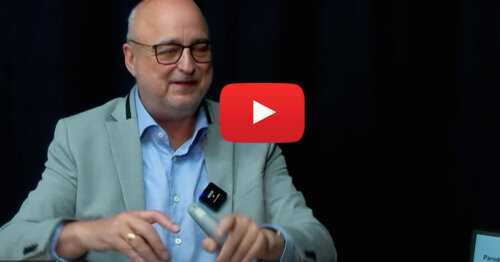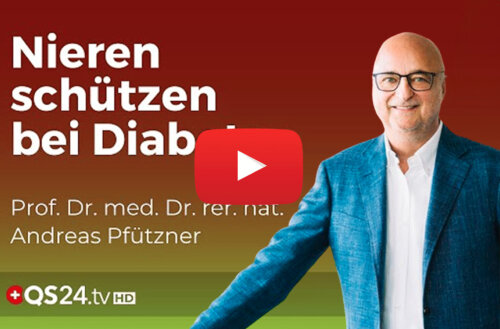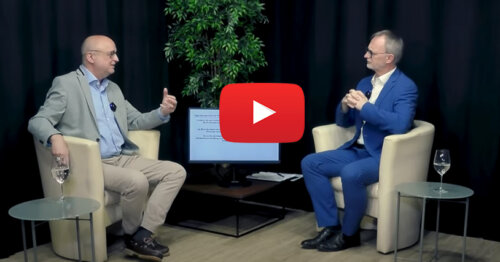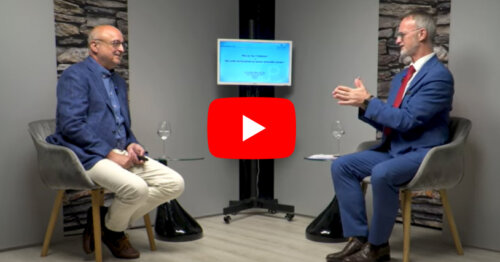DIAKARD ReStore therapy
Innovative therapy for the treatment of secondary diabetes complications
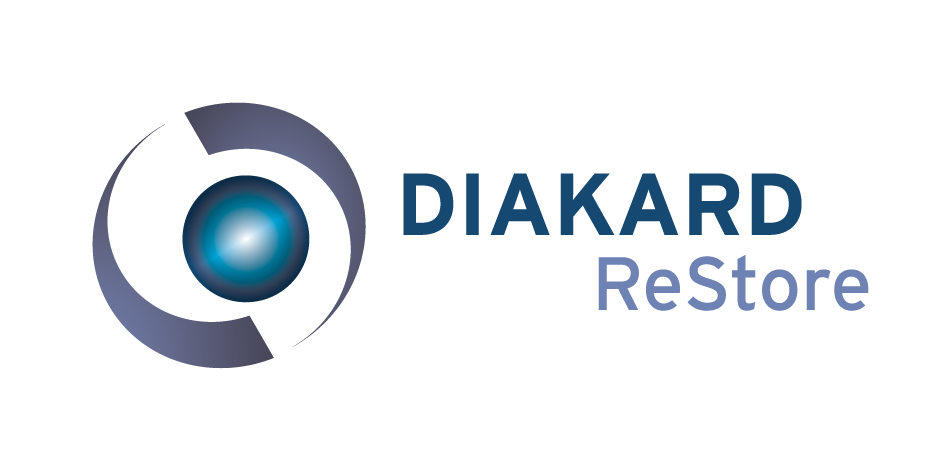
Introduction to DIAKARD ReStore therapy
Professor Dr. Dr. Pfützner and the Pfützner Science & Health Institute (PSHI Praxis GmbH with affiliated private practice) in Mainz have developed ReStore, a promising therapy for the treatment of secondary diabetes complications.
read more
The ReStore treatment aims to treat diabetes-related complications such as nephropathy, neuropathy and retinopathy (kidney, nerve and eye damage). The therapy uses a special infusion method to simulate the natural pulsatility of insulin secretion. This method improves insulin sensitivity in the smallest blood vessels and can therefore support the function of affected organs such as the kidneys and nerves. Studies show that patients with type 1 and type 2 diabetes who already have late damage can benefit from this therapy.
Insulin regulates blood sugar, promotes microcirculation and lowers blood sugar levels. The body’s natural insulin release occurs in pulses, which improves the insulin sensitivity of the receptors and maintains the balance with the counter-hormone glucagon. The loss of this pulsatility in people with diabetes often leads to vascular damage.
The therapy is particularly suitable for people with type 1 and type 2 diabetes who already suffer from secondary diseases such as nephropathy, neuropathy or retinopathy. Patients with cardiovascular risks or low quality of life, e.g. due to sleep disorders or memory problems, can also benefit. In one case study, for example, a patient’s kidney function was stabilized to such an extent that he was able to avoid permanent dialysis.
ReStore therapy can slow down or halt the progression of late or even improve it.
Improvements in kidney and nerve disorders and erectile dysfunction have already been observed. The success of the therapy varies from person to person.
"
ReStore is an intravenous insulin infusion therapy that imitates the insulin secretion of beta cells in a healthy person by administering small doses of insulin every 6 minutes using a specially programmable intensive care unit pump.
Who can benefit from ReStore?
ReStore therapy is suitable for people with type 1 or type 2 diabetes who are already suffering from typical late effects such as kidney damage (nephropathy), nerve damage (neuropathy) or eye damage (retinopathy).
read more
Patients with an increased risk of cardiovascular disease or diabetes-related erectile dysfunction could also benefit. In addition, the therapy can help people with diabetes who have a reduced quality of life as a result of the disease, for example due to sleep disorders, memory problems or depression. Positive effects have also been observed in some dementia diseases such as Alzheimer’s and Parkinson’s diseases.
How does the treatment work?
ReStore therapy offers an innovative way of treating the late damage caused by diabetes by mimicking the body’s natural release of insulin and thus restoring the sensitizing insulin effect on the small blood vessels.
read more
The therapy can improve the state of health and quality of life of people with diabetes who are already suffering from secondary damage.
Specifically, the therapy does the following:
Improve insulin sensitivity in the blood vessels:
The pulsed administration of insulin, as carried out in ReStore therapy, imitates the natural release of insulin in healthy people. This pulse release ensures that the insulin receptors in the small blood vessels (microcirculation) react more sensitively to insulin again. This improves the blood flow and nutrient supply to the cells.
Slowing down or stopping diabetes-related late damage:
The therapy can slow down or even stop the progression of late damage such as kidney damage (nephropathy), nerve damage (neuropathy) and eye damage (retinopathy). In some cases, serious consequences, such as the need for dialysis, have been prevented by the treatment.
Improvement in quality of life:
Patients report an improvement in their general quality of life. The therapy can lead to more energy, better sleep and a reduction in symptoms such as depression, memory problems and diabetes-related erectile dysfunction. This shows that the therapy can also have a positive impact on general well-being and mental health. In addition, increased intrinsic motivation – another positive effect – contributes to the success of the treatment.
Alternative treatment option:
For many patients with advanced diabetes and severe secondary damage, ReStore therapy offers an additional option when conventional treatment approaches are no longer sufficiently effective.
ReStore therapy provides comprehensive support for people with diabetes by restoring the natural effects of insulin on the blood vessels and can therefore improve patients’ health and quality of life.
Which side effects may occur?
ReStore therapy is generally considered to be low-risk and has already been used for many patients, particularly in the USA.
read more
Nevertheless, there are potential side effects that are mainly associated with the administration of insulin and glucose:
Hypoglycemia (low blood sugar):
As insulin is administered during treatment, blood glucose levels can drop sharply. To avoid this, the insulin infusion is closely monitored and glucose is administered in parallel to prevent an excessive drop in blood sugar levels.
Local reactions at the injection site:
Intravenous infusion may cause redness, pain or slight swelling at the injection site. This side effect is usually harmless and disappears after a short time.
Allergic reactions:
In rare cases, allergic reactions to insulin may occur. These manifest as a skin rash, itching or swelling. However, severe allergic reactions are extremely rare.
Fluid retention or electrolyte disturbances:
Long-term or high-dose insulin administration can lead to fluid retention or electrolyte imbalances, which must also be monitored by a physician.
Fluctuations in blood sugar:
As the therapy affects the blood glucose level, blood glucose fluctuations may occur, which may require an adjustment of the usual diabetes medication. This will be monitored during treatment and adjusted if necessary.
Note:
The therapy is carried out under medical supervision and monitoring in order to minimize the risk of side effects. Before starting ReStore therapy, the patient’s individual state of health is comprehensively assessed in order to better evaluate possible risks.
How is the treatment conducted?
Before the therapy begins, the patient’s blood glucose level is measured and stabilized. The patient is prepared for the therapy in a relaxed environment, as the treatment takes around two to three hours.
read more
Intravenous insulin infusion
The treatment itself consists of a special insulin infusion using a programmable infusion pump. A small dose of insulin is administered intravenously every six minutes to imitate the natural, pulsating release of insulin in a healthy body. A total of around 20 such “pulses” are administered per session.
Simultaneous glucose supply
As the insulin doses lower the blood sugar, glucose is administered in parallel, either orally or also intravenously, to avoid a drop in blood sugar (hypoglycemia). The combination of insulin and glucose ensures that the blood sugar level remains stable throughout the entire therapy.
Continuous monitoring
Throughout treatment, the patient’s state of health is monitored by healthcare professionals. Blood pressure, blood sugar and other vital signs are checked regularly in order to detect any side effects at an early stage and adjust the therapy if necessary.
Frequency and duration of therapy
In the first two to three months, ReStore therapy is usually carried out once a week. Each session lasts around 3 – 4 hours. Over time, the intervals between treatments can be extended, depending on the success of the therapy and the patient’s individual state of health. After the initial intensive phase, many patients come back every two to three weeks for a refresher.
Assessment of treatment success
After the first three treatments, the effect of the therapy is evaluated. If positive effects are visible, further sessions can be planned. If the patient does not respond to the therapy, it may be discontinued.
ReStore therapy is complex, but is a promising option for many patients with diabetes-related late damage, as it improves the sensitivity of blood vessels to insulin and can therefore slow down stabilize or even reverse the progression of late complications.
Do I have to come to Mainz for this?
Yes, in order to receive ReStore therapy, patients currently have to come to Mainz, as this special treatment is carried out in the private practice of Professor Dr. Dr. Pfützner. In Switzerland, we work together with the Swiss Mountain Clinic in Castaneda (www.swissmountainclinic.com) for ReStore therapy.
read more
The therapy requires intensive medical supervision and the use of specially programmable infusion pumps that ensure precise dosing of the insulin pulses. ReStore therapy is currently only available at a few specialized centers, and the Institute with its affiliated private practice in Mainz is one of the few to offer this treatment method.
What is the difference to conventional therapy?
Apart from the general improvement of blood glucose control to delay progression, there is currently no other therapy to improve late complication. This demonstrates the particular importance of ReStore therapy.
read more
The pulse patterns are intended to make the insulin receptors in the smallest blood vessels more sensitive again and thus improve blood circulation in the affected areas.
This is particularly helpful in the prevention and treatment of late complications, which can often only be influenced to a limited extent by conventional therapy. While conventional therapy primarily controls blood sugar, ReStore therapy aims to improve the function of the small blood vessels and thus the supply to the organs in the long term.
Conclusion of the DIAKARD ReStore therapy
ReStore therapy has achieved significant improvements in the treatment of kidney disease, nerve disorders and other complications.
It is important to emphasize that this therapy does not replace basic diabetes treatment, but complements and optimizes it. A combination of good diabetes therapy and ReStore can help to prevent late complications or delay, stop or even improve these conditions.
Case study from our practice
Diabetes and kidney function
When dialysis becomes unavoidable
Case study ReStore
75-year-old B.B. has been suffering from type 2 diabetes with progressive renal insufficiency for 20 years.
Following an apoplexy in 2018 and pre-existing cardiovascular conditions, his GFR deteriorated rapidly from 39 to 25 mL/min in 2019. A cardiovascular collapse over Christmas further accelerated the development. The doctors believed that dialysis would be unavoidable.
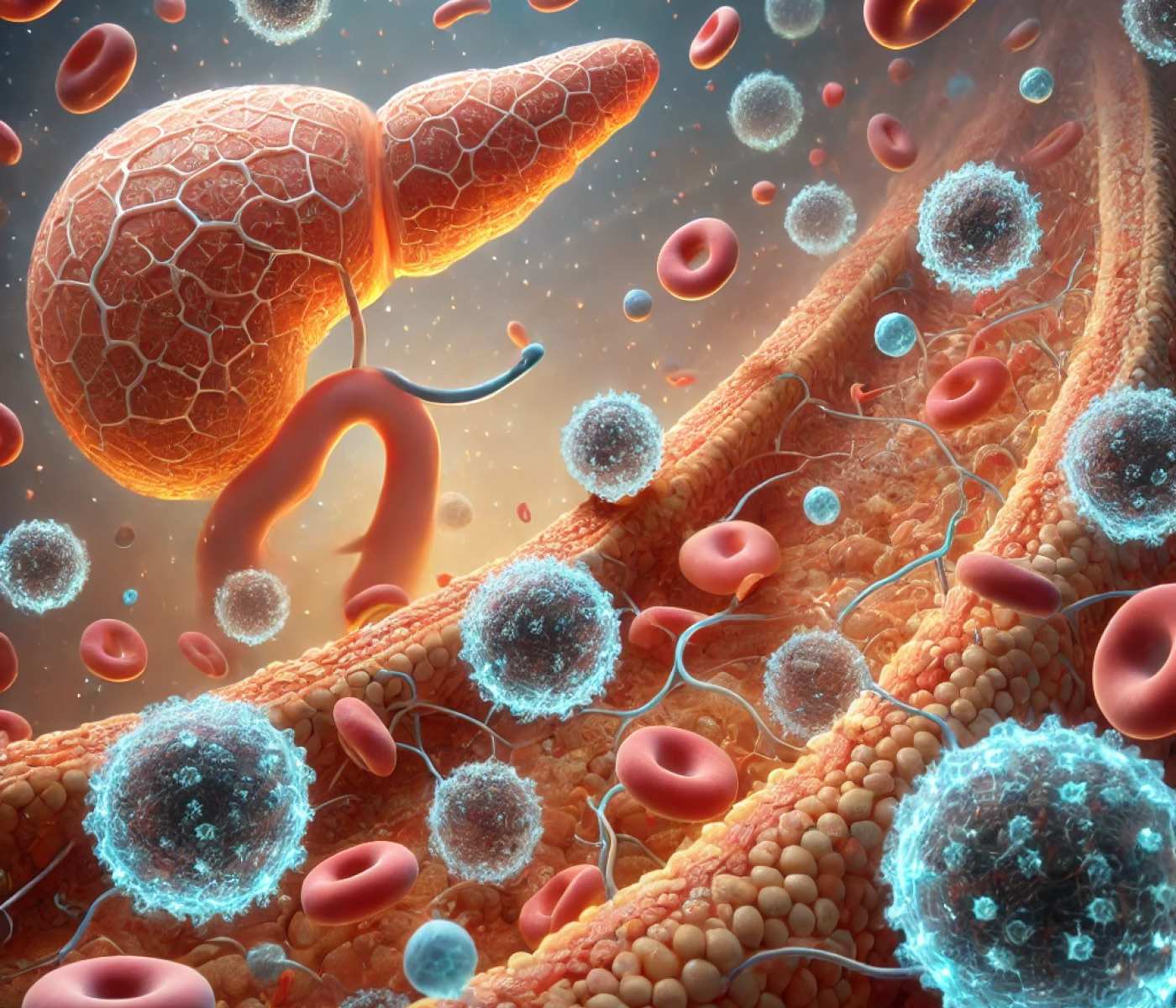
Interaction of insulin and glucose
Insulin is released from the pancreas to transport glucose into the cells that need it for energy production.
We are happy to support you!
Visit us and experience how state-of-the-art diabetology care and a pleasant practice atmosphere go hand in hand. We look forward to welcoming you and providing you with first-class medical care – with a smile!
